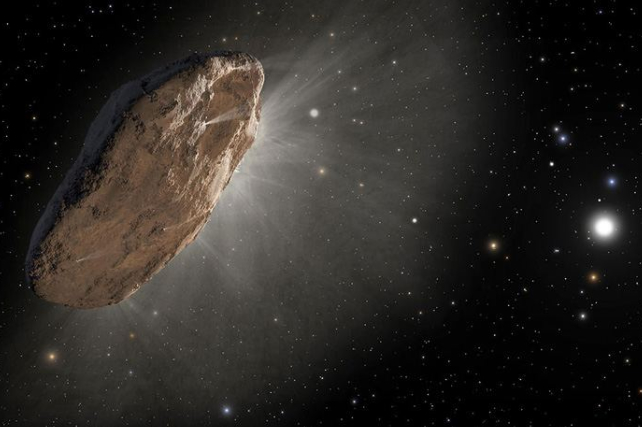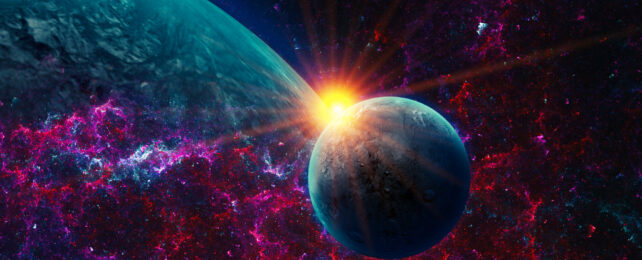The orbits of the planets around the Sun have been the source for many a scientific debate. Their current orbital properties are well understood but the planetary orbits have evolved and changed since the formation of the Solar System.
Planetary migrations have been the most prominent idea of recent decades suggesting that planetary interactions caused the young planets to migrate inwards or outwards from their original positions.
Now a new theory suggests a 2-50 Jupiter-mass object passing through the Solar System could be the cause.
The evolution of the orbits of the planets is a complex process. Initially the planets formed out of a rotating disk of gas and dust around the young hot Sun. The phenomenon of the conservation of angular momentum caused the material to form a plane leading to orbits that were circular and in the same plane.
As the planets grew, interactions within the protoplanetary disk led to orbital migrations with planets moving inwards or outwards. There were gravitational interactions too that led to significant changes in the eccentricity and inclination, sometimes causing protoplanets to be ejected out of the Solar System. Tidal forces from the Sun could also have altered the orbits.
While protoplanet ejections are thought to have been fairly common as the Solar System was forming, on occasions celestial objects visited us. These objects seem to have been rare and provide a valuable insight into distant planetary systems.
Oumuamua, was discovered in 2017 and was the first confirmed interstellar visitor. It exhibited an elongated shape and unusual acceleration, probably caused by outgassing or other non-gravitational forces.

A recently published paper has suggested such an interstellar visitor could have driven changes in the orbits of our planetary cousins.
The paper was authored by a team of scientists led by Garett Brown University of Toronto. They explore the nature of the eccentricity of the gas giants, suggesting it is unlikely the current theories can explain observations.
Instead they demonstrate that an object with between 2 to 50 times the mass of Jupiter passing through the Solar System was a more likely cause. Their paper explains that an object passing through with a perihelion distance (closest distance from Sun) of less than 20 astronomical units and a hyperbolic excess velocity less than 6km/s-1 could explain observations.
Their calculations suggest there is a 1 in 100 chance that an interstellar visitor could produce the orbits we see today, chances that are far better than other theories. Using simulations and approximate values for the properties of the visitor, the team conclude that the theory is the most plausible to date.
This article was originally published by Universe Today. Read the original article.
